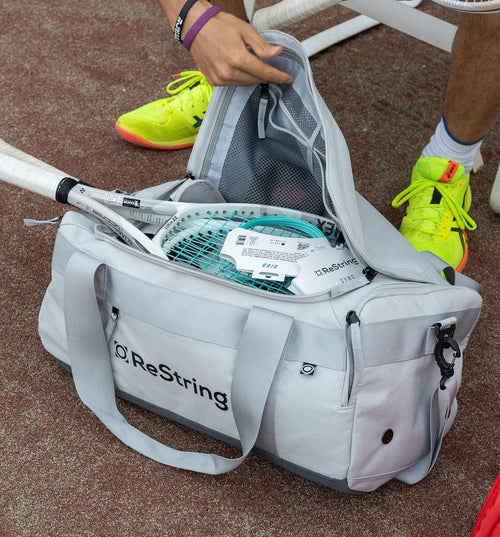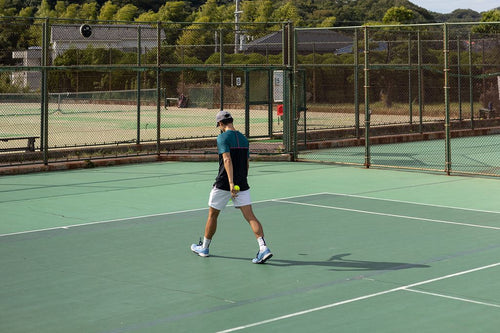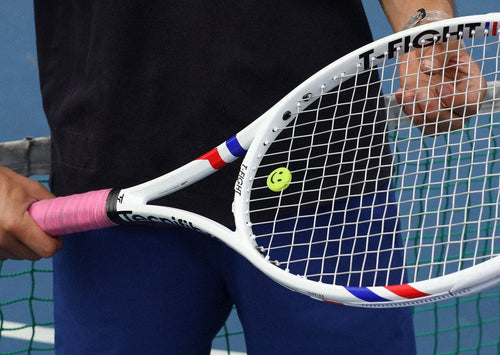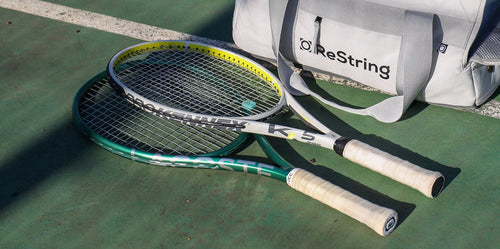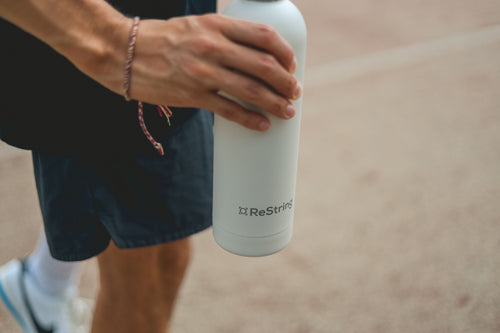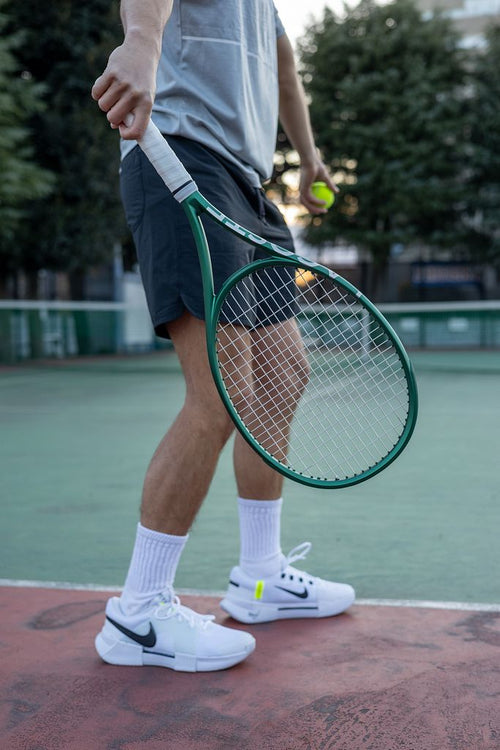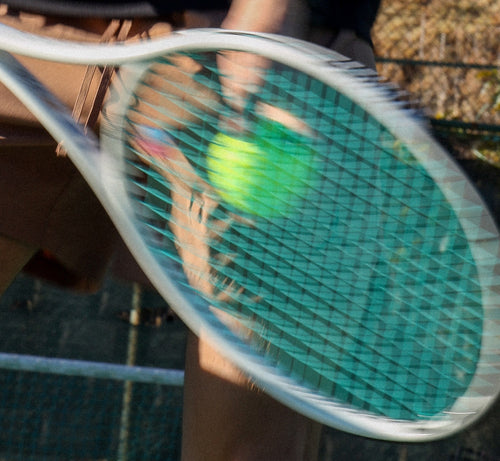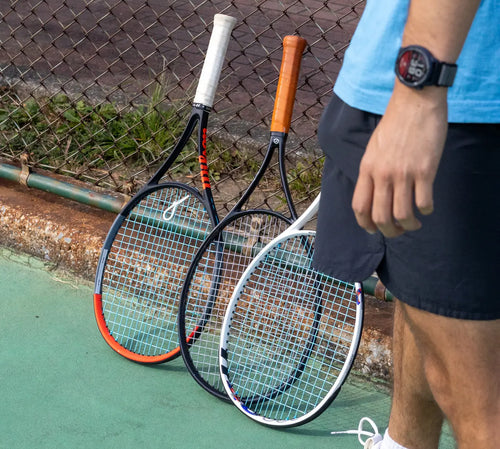Tennis String Snapback Ultimate Guide: Level Up Your Game
Juan
Ever wondered why pro players can hit with seemingly impossible amounts of spin?
The secret lies in a phenomenon called "string snapback" - a crucial factor that's revolutionized modern tennis.
In this guide, we'll explore how the movement of your tennis strings affects your game, and why understanding it could be the key to unlocking your next level of play.
Understanding String Snapback
What is String Snapback?
Think of string snapback like a rubber band snapping back into place. When you hit a tennis ball, the strings move sideways and stretch as they grab the ball.
Snapback happens when these displaced strings quickly return to their original position. How well this works depends on how smoothly the strings can slide against each other, what they're made of, and how tight they're strung.
Why does Snapback Matter?
The faster your strings snap back, the more spin you can create on the ball. This extra spin helps you hit harder while keeping the ball in the court. It also lets you aim deeper into the court while still clearing the net comfortably.
Modern tennis is all about power and spin, making string snapback more important than ever before. Players need strings that perform consistently from the first point to the last.
That's why the newest co-polyester strings like Zero are specially designed to maximize snapback, giving players unprecedented ability to generate spin while maintaining precise control over their shots.
String snapback occurs when strings return to position after impact, giving you more spin and power in your game.
Factors Affecting String Snapback
String Material
When it comes to snapback performance, co-polyester strings (co-polys) are the gold standard.
But not all co-polys deliver the same results. The latest generation of these strings have been specifically engineered to maximize snapback, offering dramatically better performance than their older counterparts.
You'll find differently shaped strings on the market (six-shaped, hexagonal etc.) which contribute to generating snapback. However, the real secret to superior snapback lies in the string's surface coating. Think of it like a non-stick pan – the lower the friction between strings, the more freely they can slide and snap back into place.
ReString's technology stands out here. Zero and Sync feature an exceptionally low friction coefficient thanks to our advanced coating technology.
This creates incredibly smooth string-to-string movement, delivering superior snapback that lasts longer than older co-polys, polys, natural gut and any other type of string.
String Tension
When it comes to tension, lower often means better snapback. It's simple physics – looser strings have more room to move around and snap back. Think of it like a loose rubber band versus a tight one – the loose band has more freedom to stretch and snap back.
Finding the right tension is about balance though. Too loose and you'll lose control, too tight and you'll restrict the snapback effect. Most players find their sweet spot between 45-52 pounds, but it's worth experimenting to find what works best for your game.
String Pattern
Open string patterns (with fewer strings) give you better snapback for the same reason lower tension does – more space equals more movement. The strings have more room to slide and snap back when they're not packed tightly together.
Dense patterns can still provide good snapback, but they might need lower tension to achieve the same effect. It's all about giving those strings enough freedom to do their job.
String material, tension, and pattern all affect snapback performance, with co-polys, lower tensions, and open patterns providing more snapback.
Maximizing String Snapback Performance
Choose the Right String
Modern co-polys, especially those engineered with low-friction coatings, will give you the best snapback performance.
You can also string a hybrid setup like Cristina Bucsa, who uses Zero in the mains (vertical strings) and Sync in the crosses (horizontal strings).
Zero's shaped profile in the mains provides excellent ball bite, while Sync's round profile and slick surface in the crosses enables optimal string movement. Both have very low friction coefficients meaning you get the best of both strings without sacrificing snapback performance.
Keep Strings Fresh
Performance isn't just about choosing the right strings. It's also about keeping an eye on when to replace them too.
While traditional poly strings often lose their snapback qualities quickly, co-poly strings with advanced low-friction coatings tend to last longer.
The reason is that because there is less string-on-string abrasion, you'll maintain your snapback performance for more hours of play.
This increased durability is not only good for your string’s performance, but since you will need to replace them less, it is also good for your wallet and more sustainable.
Choose modern co-poly strings with low-friction coatings and maintain fresh strings for best snapback performance.
FAQs
Do all strings provide snapback?
No. While all strings can move and return to position, co-polyester strings (co-polys) provide the best snapback, especially those with advanced low-friction coatings. In comparison, natural gut, multifilament, and synthetic gut strings offer minimal snapback.
Can snapback be too aggressive?
Yes. Too much snapback can make shots harder to control, especially for newer players. If this happens, try increasing your string tension or switching to a hybrid setup for more comfort.
Does weather affect string snapback?
Yes. Heat increases string elasticity and snapback, while cold reduces it. However, modern co-poly strings with advanced coatings are less affected by weather than traditional strings.
Conclusion
String snapback is crucial for modern tennis, helping you generate more spin while maintaining control.
The key to maximizing snapback lies in choosing the right string – particularly co-polys with advanced low-friction coatings. The string's surface technology makes the biggest difference, but lower tension and open string patterns can enhance snapback further.
Ready to experience superior snapback? Try Zero, engineered for maximum snapback and durability 🎾








